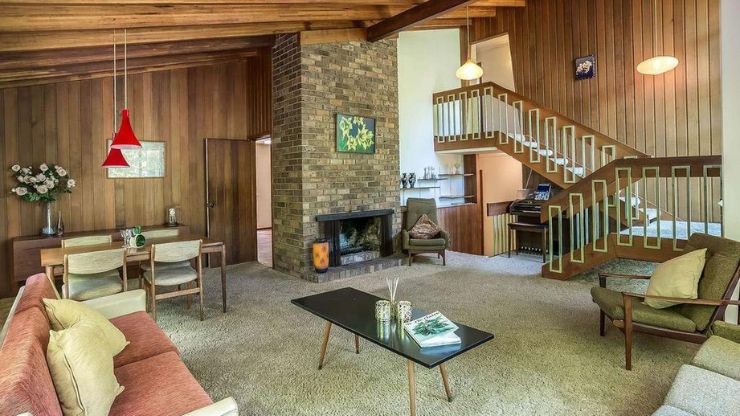Step into the world of 1970s architecture, where homes were adorned with unique features that defined an era. While some may view these elements as outdated, others see them as nostalgic treasures waiting to be rediscovered. In this blog, we delve into the charm of 70s homes, highlighting ten forgotten features that once graced these abodes. From shag carpets to sunken living rooms, these design elements are making a comeback in modern homes, adding a touch of retro flair. Join us on a journey through time as we explore the enduring appeal of 70s home features and how they can be incorporated into today’s interiors.
Table of Contents
Toggle10 Forgotten Features Of 70s Homes
1. Sunken Living Rooms
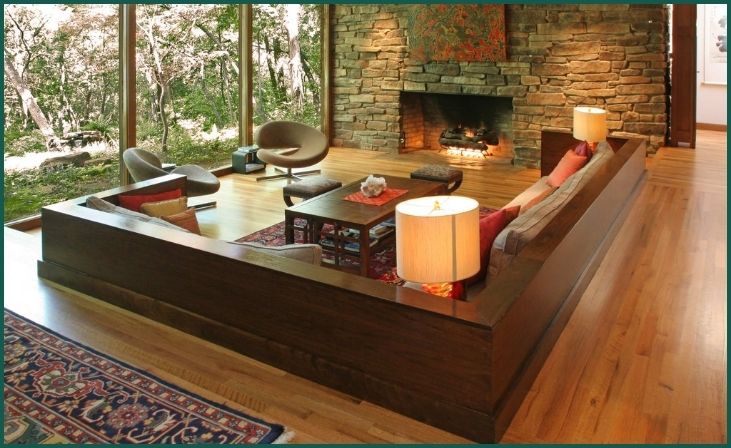
Sunken living rooms were a defining feature of 1970s homes, offering a unique and cozy space for relaxation and socializing. These rooms were typically located a few steps below the main floor level, creating a subtle separation from the rest of the living space. Sunken living rooms often featured built-in seating or low sofas, which added to the room’s intimate and inviting atmosphere. This design element was popularized during the mid-century modern era and continued to be a sought-after feature in many homes throughout the 70s. In modern interior design, sunken living rooms are experiencing a resurgence in popularity, albeit with a more contemporary twist. Homeowners are embracing the idea of creating distinct zones within their living spaces, and sunken areas offer a stylish and functional solution. By incorporating elements like plush rugs, floor cushions, and low coffee tables, homeowners can create a cozy and inviting sunken living room that retains the charm of its 70s predecessors while feeling fresh and modern.
Also Read:- DIY Home Improvement Projects Under $50
2. Conversation Pits
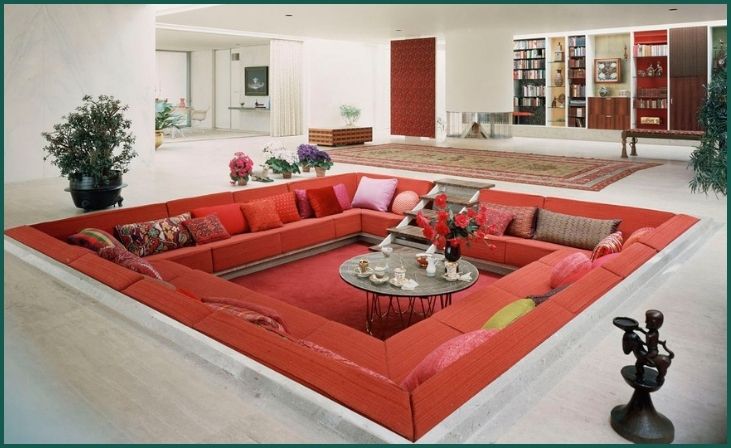
Conversation pits were another iconic feature of 70s homes, often found in the living room or den. These sunken seating areas were designed to encourage social interaction, providing a cozy and intimate space for family and guests to gather. Conversation pits were typically surrounded by built-in seating, which added to their cozy and enclosed feel. While conversation pits fell out of favor in the following decades, they are experiencing a resurgence in modern interior design. Homeowners are once again embracing the idea of creating unique and inviting spaces within their homes, and conversation pits offer a stylish and functional solution. By incorporating elements like comfortable seating, soft lighting, and decorative cushions, homeowners can create a conversation pit that feels both retro and modern.
3. Earthy Color Schemes
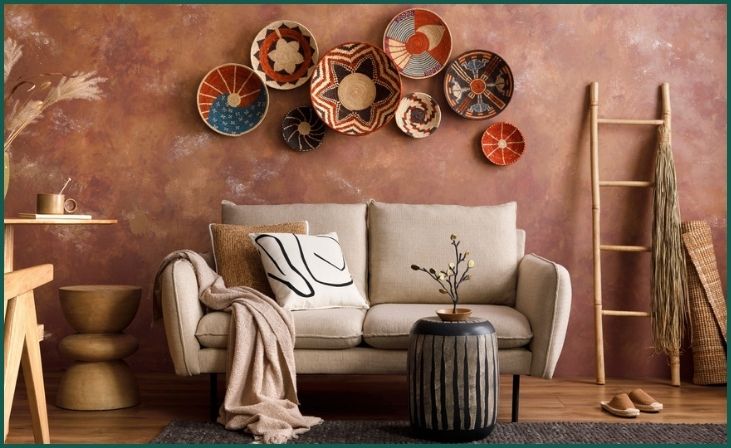
The 1970s were known for their earthy color schemes, which included shades of brown, orange, avocado green, and mustard yellow. These warm and inviting colors were used on walls, carpets, and furniture, creating a cozy and welcoming atmosphere. Earthy color schemes were a reflection of the decade’s focus on nature and the environment, with many homeowners seeking to bring the outdoors inside through their choice of colors. In modern interior design, earthy color schemes are making a comeback, albeit with a more contemporary twist. Homeowners are once again embracing these warm and inviting colors, using them to create cozy and welcoming spaces that feel connected to nature. By incorporating elements like textured fabrics, natural materials, and indoor plants, homeowners can create a modern take on the 70s earthy color palette that feels both nostalgic and fresh.
4. Shag Carpets

Shag carpets were a staple of 70s homes, prized for their plush and luxurious feel. These deep-pile carpets were often found in living rooms, bedrooms, and dens, adding warmth and texture to the space. Shag carpets were available in a variety of colors, with popular choices including brown, orange, and avocado green. While shag carpets fell out of fashion in the following decades, they are experiencing a revival in modern interior design. Homeowners are once again embracing the luxurious feel of shag carpeting, using it to add warmth and texture to their living spaces. By incorporating elements like low furniture, minimalist decor, and modern lighting, homeowners can create a modern take on the 70s shag carpet that feels both retro and contemporary.
5. Wood Paneling
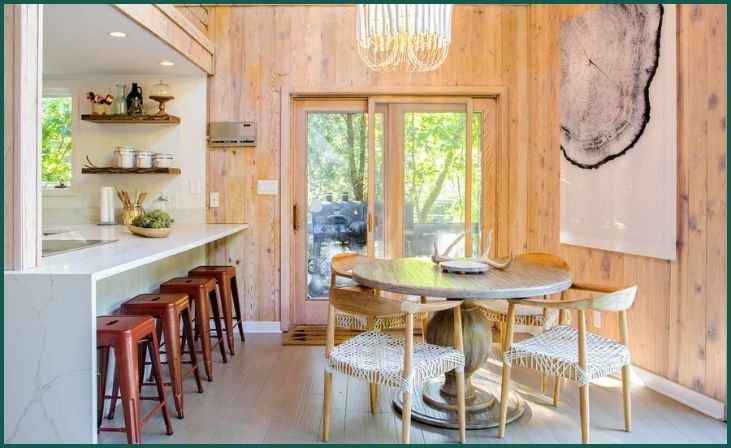
Wood paneling was a popular wall covering in 70s homes, adding a warm and rustic feel to interiors. This feature was often used in living rooms, dens, and bedrooms, creating a cozy and inviting atmosphere. Wood paneling was available in a variety of styles, with popular choices including oak, pine, and cedar. In modern interior design, wood paneling is experiencing a resurgence in popularity, albeit with a more contemporary twist. Homeowners are once again embracing the warmth and texture of wood paneling, using it to add character and charm to their living spaces. By incorporating elements like modern furniture, minimalist decor, and statement lighting, homeowners can create a modern take on the 70s wood paneling that feels both nostalgic and fresh.
Don't just scroll, subscribe!
BuzzTrail's unique web-stories are the cure for boredom you've been waiting for.
6. Built-In Furniture

Built-in furniture was a common feature of 70s homes, offering a practical and space-saving solution for storage and seating. These custom-built pieces were integrated into the architecture of the home, creating a seamless and cohesive look. Built-in furniture was often found in living rooms, bedrooms, and kitchens, adding both functionality and style to the space. In modern interior design, built-in furniture is making a comeback, albeit with a more contemporary twist. Homeowners are once again embracing the idea of custom-built pieces that maximize space and create a cohesive look. By incorporating elements like hidden storage, multifunctional design, and sleek finishes, homeowners can create a modern take on the 70s built-in furniture that feels both retro and contemporary.
7. Atriums
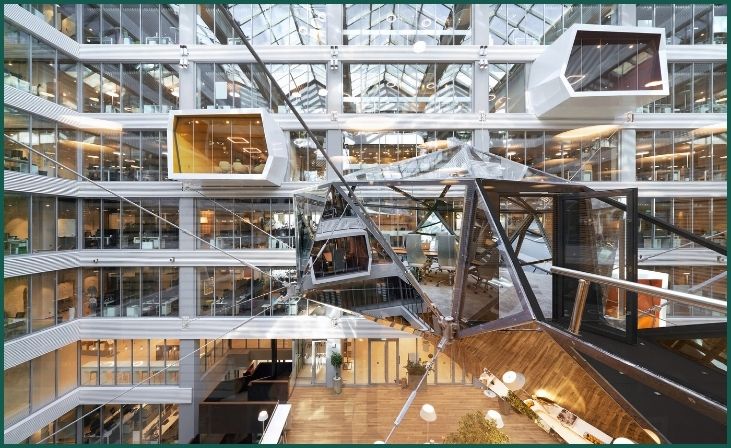
Atriums were a striking architectural feature of many 70s homes, providing a central open-air space that brought natural light and greenery into the home. These indoor gardens were often surrounded by glass walls, creating a seamless connection between indoor and outdoor spaces. Atriums were typically located in the center of the home, creating a tranquil retreat that was visible from multiple rooms. While atriums fell out of favor in later decades, they are experiencing a resurgence in modern interior design. Homeowners are once again embracing the idea of indoor gardens that bring nature into the home. By incorporating elements like skylights, indoor plants, and water features, homeowners can create a modern take on the 70s atrium that feels both nostalgic and fresh.
8. Popcorn Ceilings
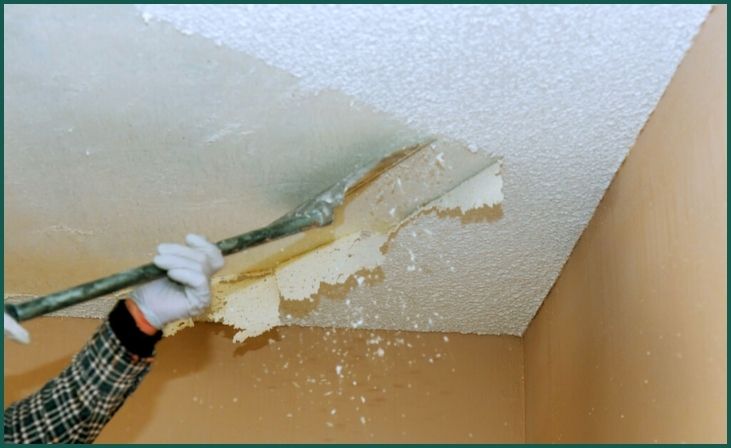
Popcorn ceilings, also known as textured ceilings, were a common feature in 70s homes. This textured finish was applied to ceilings to hide imperfections and reduce echoes in a room. While popcorn ceilings were once popular, they fell out of favor in later decades due to changing design trends. However, some homeowners are embracing the retro look of popcorn ceilings and choosing to keep them as a nostalgic nod to the past. In modern interior design, popcorn ceilings are experiencing a resurgence in popularity, albeit with a more contemporary twist. Homeowners are once again embracing the texture and character that popcorn ceilings add to a room. By incorporating elements like modern light fixtures, minimalist decor, and bold accent walls, homeowners can create a modern take on the 70s popcorn ceiling that feels both retro and contemporary.
9. Avocado Bathrooms
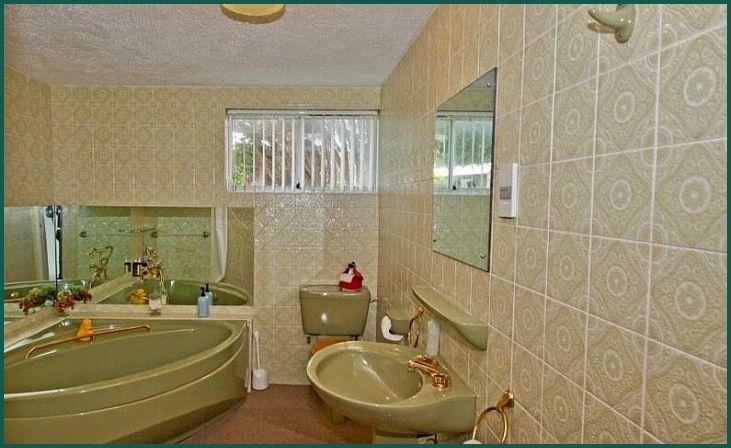
Avocado bathrooms were a popular design choice in the 70s, featuring avocado green fixtures such as sinks, toilets, and bathtubs. This bold color choice was often paired with coordinating wall tiles and flooring, creating a cohesive and colorful look. Avocado bathrooms were a reflection of the era’s love for bold and vibrant colors, adding a playful and retro touch to the home. In modern interior design, avocado bathrooms are making a comeback, albeit with a more subtle and refined approach. Homeowners are once again embracing the idea of adding color to their bathrooms, but are opting for more muted shades of green. By incorporating elements like subway tiles, brass fixtures, and natural wood accents, homeowners can create a modern take on the 70s avocado bathroom that feels both nostalgic and fresh.
10. Indoor-Outdoor Living Spaces
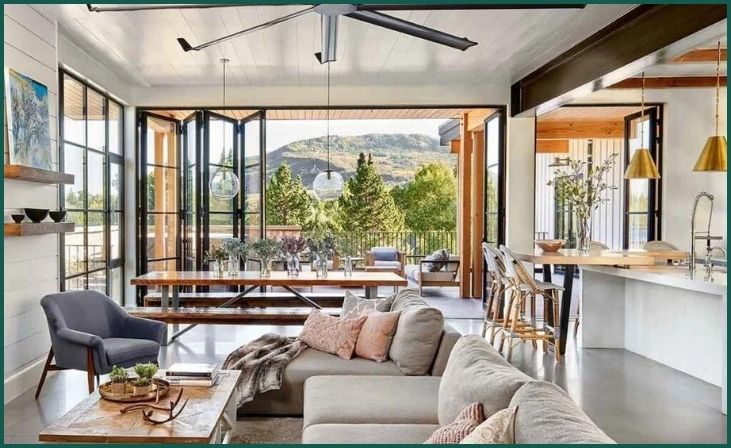
70s homes often featured indoor-outdoor living spaces, blurring the lines between interior and exterior areas. These homes typically had large sliding glass doors that opened onto patios or gardens, creating a seamless flow between the indoor and outdoor spaces. Indoor-outdoor living was a reflection of the era’s focus on nature and the environment, with many homeowners seeking to create a connection between their living spaces and the outdoors. In modern interior design, indoor-outdoor living spaces are once again becoming popular, albeit with a more contemporary twist. Homeowners are embracing the idea of creating a seamless flow between their indoor and outdoor spaces, using elements like bi-fold doors, outdoor kitchens, and cozy seating areas to create a cohesive and inviting living space. By blurring the lines between indoor and outdoor areas, homeowners can create a modern take on the 70s indoor-outdoor living space that feels both nostalgic and fresh.
Also Read:- Natural Holiday Décor Ideas
Conclusion
As we bid farewell, remember that the features of 70s homes are more than just design elements; they are symbols of an era defined by boldness and innovation. Whether you’re restoring a vintage home or simply seeking inspiration for a modern renovation, the forgotten features of 70s homes offer a glimpse into a bygone era. Embrace the nostalgia and celebrate the unique charm of these architectural gems. With a blend of creativity and respect for history, you can breathe new life into your home while honoring its retro roots.
FAQs
What are some popular architectural styles of 70s homes?
What are some popular architectural styles of 70s homes?
Popular architectural styles of 70s homes include Mid-Century Modern, Contemporary, and Brutalism. These styles often feature bold shapes, large windows, and experimental use of materials.
How can I update my 70s home without losing its charm?
How can I update my 70s home without losing its charm?
To update your 70s home while preserving its charm, consider painting walls in modern colors, updating fixtures and appliances, and incorporating contemporary furnishings that complement the original design.

